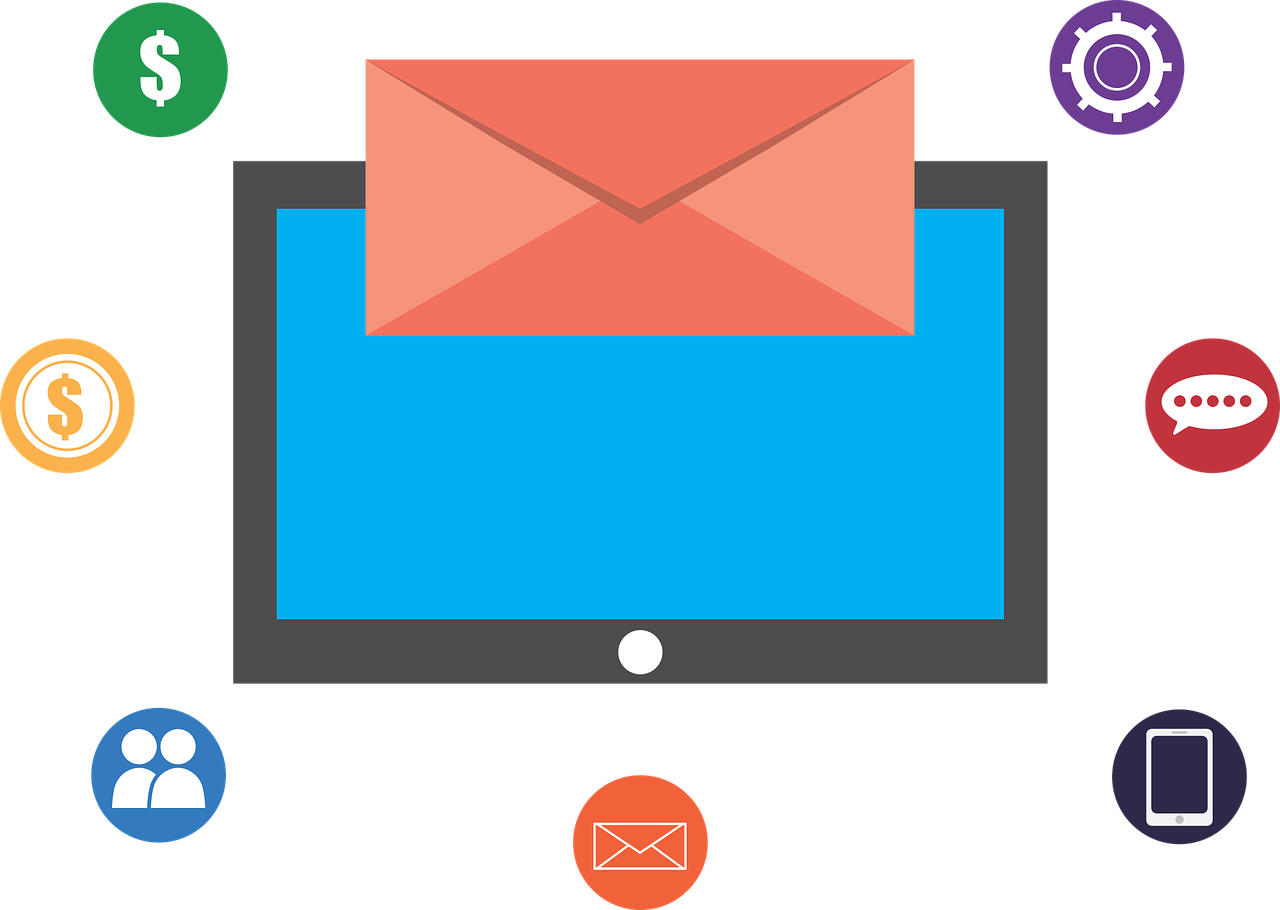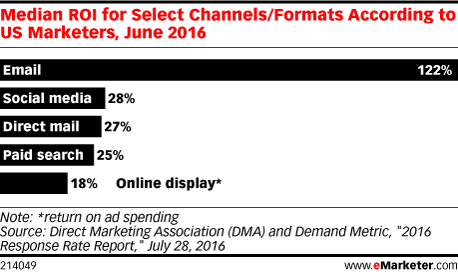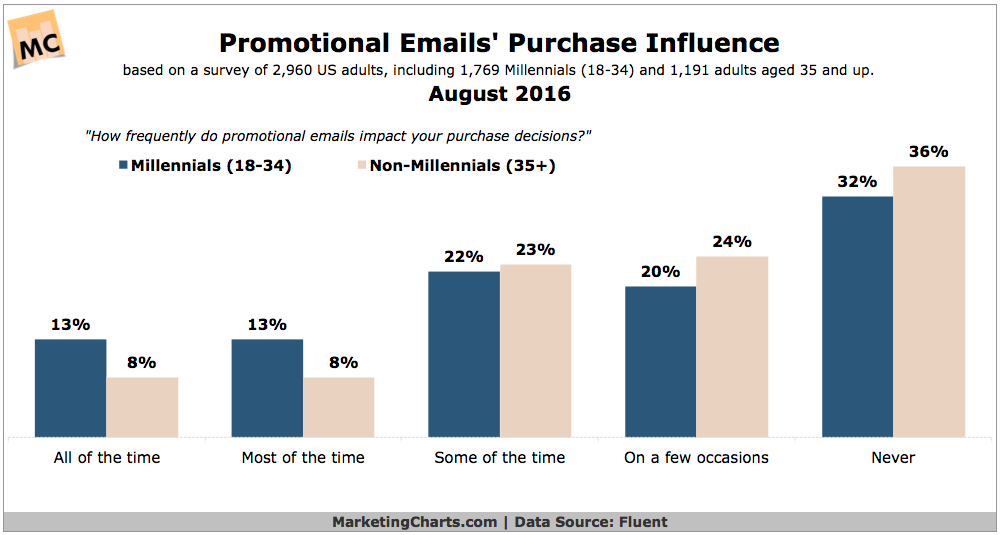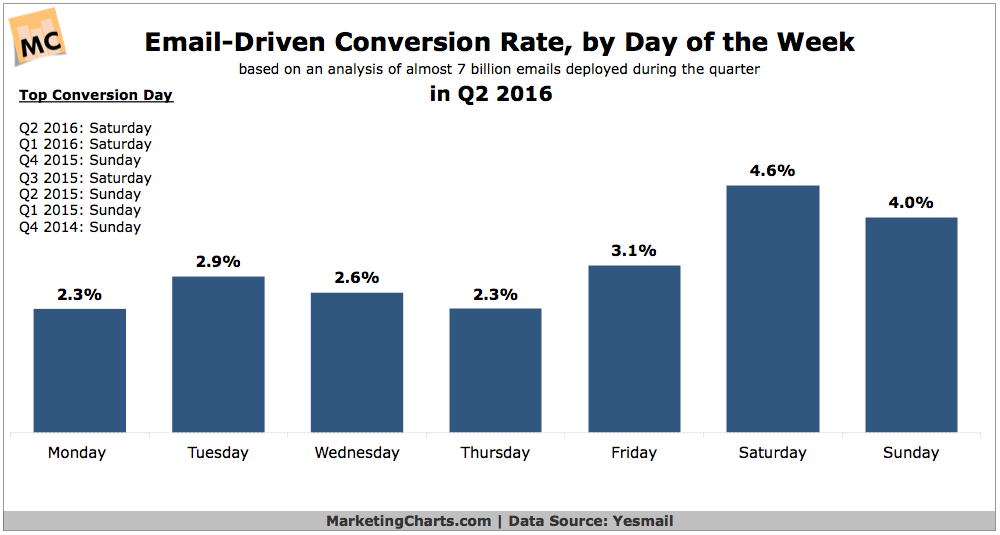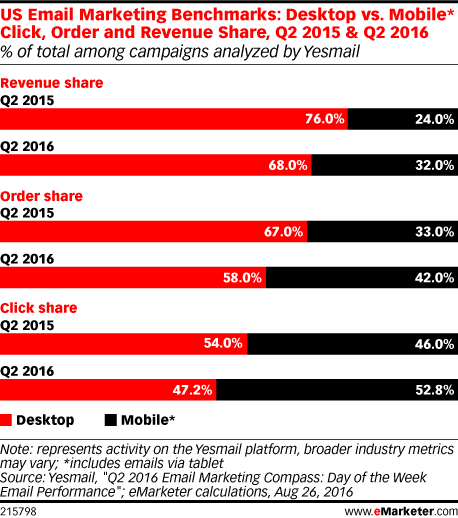Each week, we publish a mishmash of ecommerce-related, insight-infused articles for your to smash through. Just as we collect business information across all of a merchant’s channels in a single place, we’re doing the same for ecommerce-related content from a variety of top tier content creators.
As we head into the holidays, email will undoubtedly be tasked with getting out the word about your sales, deals, products, and all of the marketing goodness of Q4. In this week’s mishmash, we’ll explain exactly why email is the reigning champion of marketing channels, top times to send out emails, rates, trends to expect over the coming months, as well as ways some food-for-thought for your email campaigns.
Roi of Roi
There’s really no denying it — email remains the king when it comes to ROI. It’s been around for so long that many mistake its grayness with fading power, but that’s simply not the case. In a survey by the Direct Marketing Association and Demand Metric, marketers laid out their median ROIs, and email topped every channel, from social media to paid search, at a whopping 122%.
This isn’t news for most, but it reaffirms email’s supremacy. The cause of such a high return has to do with many things, from the cost-effectiveness of ESPs to the ease of executing an email marketing campaign. That said, one reason behind email’s domination has to do with the fact that so many people have an email address — and that’s something eMarketer expects to grow. In the US, they believe that close to 90% of internet users and nearly three-quarters of the population will possess emails by the end of this year.
And the more emails, the more opportunities for ROI.
A Holiday Email Avalanche
Retailers online and offline understand email’s power; look no further than a little more than 12 months ago. A post-holiday report by Experian reveals the email extravaganza that occurs every holiday season, and 2015 not only saw an increase in consumer spending online; it saw a 26.1% boost in the sheer volume of emails landing in consumers’ inbox. Regardless of the dump of emails, open rates still remained strong, at 21.6%.
This year, it’s likely to be no different. Two factors are expected to compound email’s effectiveness in 2016: the strong growth of both ecommerce and mobile. As consumers ditch the throngs of crowds on Black Friday and throughout November and December, they’re moving online to buy. And as more of them wield smartphones, not only do they have the power to access your emails on a whim, they have the power to purchase anywhere, anytime. Mobile had a major impact on ecommerce last year, and this year will likely be no different.
Those Perennial Millennials
Marketing always means millennials, the “hyper-connected” generation that’s most disposed to buying online. They matter, and will continue to matter even more as their spending power grows alongside ecommerce.
But they’re often labeled as unreliable, privy to shiny, new tech, and some say getting their attention is difficult. Don’t let those generalizations fool you, though; email remains very influential on them. A Fluent study on millennials (individuals between 18 and 34 years of age) found that email is more likely to impact their decision to purchase compared to older generations.
Campaign Ideas for Q4
But above all else, they (and all recipients for that matter) need a reason to interact with you. Sure, the promotions itself ideally seals the deal, but Q4 in particular presents the best opportunity to implement some email marketing campaigns that gets their attention.
Huge holidays are scattered throughout it, from Halloween and Thanksgiving to Christmas and New Year’s Eve. Practical Ecommerce has brainstormed some ideas on what types of campaigns you may want to consider creating. And for some inspiration, check out these stellar campaigns collected by HubSpot. The plethora of holidays coming soon are definitely opportunities, and checking out successful campaigns in search of a creative edge is something worth doing.
Perfect Your Pre-Header Game
At the end of the day, the merchant must offer a desirable reason for respondents to click an email; the very first words they see — the subject line — may present the make or break moment for open rates, but the often-overlooked pre-header is the real closer. The pre-header, sometimes just called a header, is an opportunity to further engage the customer.
Practical Ecommerce also has some tips for perfecting and employing those pre-headers in ways that will, at the very least, bump up open rates. For starters, avoid repeating words. Openers might get turned off by seeing the same words over and over. Even if it’s for emphasis, repeating your title in the pre-header is a waste of space that you could be using to further explain your proposition. Think of your pre-header as an extension of the subject line — it’s an opportunity for elaborating further that’s still concise enough to hold the recipient’s attention.
The Correct Time for Converions
Gauging the performance of email marketing involves a variety of metrics, from open rates to click-through rates. But the conversion rate is the biggie — getting a recipient to act is the goal with email marketing. While Wednesday at 1 p.m. might be the optimal time for getting them open, a conversion is a different matter. According to a report by Yesmail, gaining actual conversions is most likely to happen on the weekend, especially for business-to-consumer types.
Of course, every merchant’s optimal times varies, but this broad analysis of billions of emails illustrates that consumers are most likely to act on your marketing promotions on the weekends. Whether it’s because they aren’t as busy with their daily lives — work, school, etc. — or because they have more time to check their emails, is up to interpretation.
The study also found that engagement was uneven — after looking at quarterly performance over 24 months, top days for open and click rates were scattered. Only conversion rates consistently ranked high on the weekends over their 2 years of research.
On the topic of mobile, Yesmail’s report depicts the rising tide of mcommerce as well, something that’s likely to matter a lot in the coming few months. The facts are straightforward: in all aspects, from order share to click share and revenue, mobile devices are beginning to pull significantly more weight, getting very close to surpassing desktop’s dominance.

